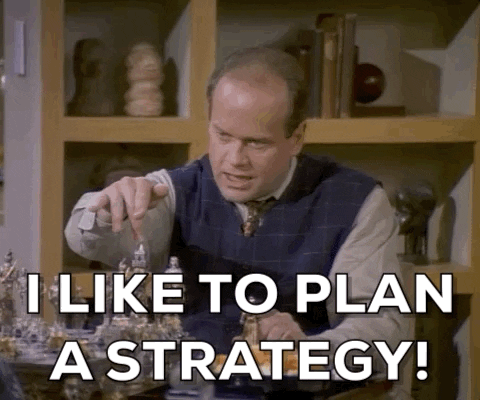Reading Time: 15 minutes

Introduction
Welcome to the fascinating world of marketing, a domain that is both an art and a science. At its core, marketing is about connecting with people, understanding their needs and desires, and finding innovative ways to fulfill them. It’s a dynamic mix of creativity, strategy, and analysis that shapes the way businesses interact with their customers and the world at large.
Understanding Marketing: Marketing is much more than just selling products or services. It’s a comprehensive process that involves researching the market, developing strategies, creating and communicating value, and building lasting relationships with customers. Whether it’s a global corporation or a small local business, marketing plays a crucial role in their success.
Why Marketing Matters for All Businesses: For businesses of any size, marketing is the lifeline that helps them to stand out in a crowded market. It’s not just about flashy advertisements or catchy slogans; it’s about creating a narrative that resonates with the target audience, establishing a brand presence, and driving sustainable growth. In today’s rapidly evolving marketplace, where consumer preferences can change overnight, effective marketing strategies are essential for:
- Building Brand Awareness: Marketing helps businesses introduce their brand to potential customers, making them aware of the products or services offered.
- Engaging Customers: Through various marketing channels, businesses can engage with their audience, receive feedback, and foster a community around their brand.
- Driving Sales and Growth: Effective marketing strategies directly contribute to increasing sales, expanding customer base, and driving business growth.
- Staying Competitive: In a market with ever-increasing competition, marketing is crucial for businesses to differentiate themselves and stay relevant.
As we delve deeper into the basics of marketing, keep in mind that this field is constantly evolving. New technologies, platforms, and consumer behaviors are continually shaping and reshaping the landscape. Thus, staying informed and adaptable is key to leveraging the power of marketing in any business venture.
In the following sections, we will explore the foundational elements of marketing, from the classic 4 P’s to the modern digital landscape, and uncover how mastering these basics can lead to extraordinary business success.
Defining Marketing: More Than Just Selling
In the quest to understand the basics of marketing, it’s essential to start with its definition and grasp the overarching goals and purposes it serves in the business world.
What is Marketing?
Marketing Defined: At its simplest, marketing can be defined as the set of activities, processes, and practices involved in creating, communicating, delivering, and exchanging offerings that have value for customers, clients, partners, and society at large. It’s a multifaceted discipline that combines elements of psychology, sociology, economics, and data analytics to understand and influence consumer behavior.
The Broader Scope of Marketing
- Creating Value: The first step in marketing is identifying what customers need or want and then developing products or services that satisfy those desires. It’s not just about the physical product or service; it’s about the experience, the brand, and the value it brings to the consumer’s life.
- Communicating Value: Once a valuable product or service is created, the next step is to communicate its benefits to the target market. This involves crafting compelling messages, choosing the right channels (like social media, email, TV, etc.), and creating a narrative that connects with the audience.
- Delivering Value: Marketing also focuses on how the product or service is delivered to the consumer. This includes the sales process, distribution channels, and ensuring a smooth and satisfying customer experience.
- Exchanging Value: The culmination of marketing efforts is the exchange where the customer obtains the product or service, and the business receives compensation. This exchange should be mutually beneficial, resulting in customer satisfaction and business profitability.
Goals and Purposes of Marketing
- Understanding Consumer Needs and Desires: Through market research and analysis, marketing helps businesses understand what their customers really want.
- Building and Maintaining Relationships: Marketing is about building long-term relationships with customers, which leads to repeat business and customer loyalty.
- Brand Building: Effective marketing strategies help in creating a strong, recognizable brand that stands out in the marketplace.
- Driving Business Growth: By increasing brand awareness, attracting new customers, and retaining existing ones, marketing drives the overall growth and sustainability of a business.
- Adapting to Market Changes: Marketing keeps businesses adaptable and responsive to changes in consumer preferences, market conditions, and technological advancements.
- Creating a Competitive Edge: In a crowded market, well-executed marketing strategies can give businesses a competitive advantage.
Marketing is an all-encompassing practice that goes far beyond just selling products or services. It’s about understanding and meeting customer needs, building relationships, and driving sustainable growth. As we proceed, we’ll delve deeper into each aspect of marketing, uncovering how these principles are applied in real-world scenarios.

Core Principles of Marketing
In this section, we’ll dive into the core principles of marketing that are fundamental to any successful business strategy. These principles are universal, regardless of the size of the business or the industry it operates in.
Identifying and Meeting Customer Needs
1. Understanding the Customer:
- The first and foremost principle of marketing is to understand who your customers are, what they need, and what they value.
- This involves extensive market research, including surveys, focus groups, and data analysis to gather insights about customer preferences and behaviors.
2. Developing Solutions to Meet These Needs:
- Once you understand your customers’ needs, the next step is to develop products or services that provide solutions to these needs.
- Innovation and creativity play a key role here, as businesses must not only meet current needs but also anticipate future trends and changes in consumer behavior.
3. Ensuring Customer Satisfaction:
- Meeting customer needs is not just about delivering a product or service; it’s about ensuring that the customer is satisfied and their expectations are met or exceeded.
- Customer feedback and after-sales service are crucial in this regard, helping to build a long-term relationship with the customer.
Creating Brand Awareness and Loyalty
1. Establishing a Strong Brand Identity:
- A strong brand identity helps in differentiating your business from competitors and establishing a unique presence in the market.
- This involves a consistent and appealing brand message, logo, colors, and overall brand personality.
2. Consistent Communication and Engagement:
- Regular and consistent communication through various channels like social media, email marketing, and advertising helps keep the brand at the forefront of customers’ minds.
- Engaging with customers through these channels, responding to their queries, and involving them in brand stories enhances loyalty.
3. Building Emotional Connections:
- Brands that succeed in creating an emotional connection with their customers enjoy greater loyalty and advocacy.
- This can be achieved through storytelling, community involvement, and aligning with values important to the customer base.
Driving Sales and Growth
1. Effective Marketing Strategies:
- Driving sales requires a well-planned marketing strategy that combines various elements of the marketing mix effectively.
- Promotions, discounts, and special offers are often used tactics to boost sales in the short term.
2. Focusing on Customer Retention:
- Acquiring a new customer is often more costly than retaining an existing one.
- Implementing loyalty programs, personalized marketing, and exceptional customer service are key to retaining customers.
3. Continuous Analysis and Adaptation:
- The market is dynamic, and so should be your marketing strategies.
- Regularly analyzing sales data, market trends, and customer feedback helps in fine-tuning marketing efforts and adapting to changing market conditions.
The core principles of marketing revolve around a deep understanding of customer needs, building a strong and relatable brand, and employing strategies that drive sales and business growth. These principles form the backbone of any successful marketing strategy and are essential for achieving long-term business success.
The Marketing Mix – Mastering The 4 P’s
In this section, we delve into the heart of marketing strategy: the Marketing Mix, commonly known as the 4 P’s – Product, Price, Place, and Promotion. These components are crucial in determining a business’s strategy and are essential for anyone looking to excel in marketing.
Product: The Foundation of Your Offer
1. Importance of Product Design and Development:
- The product is the tangible good or service you offer to the customer. It’s vital that the product meets not only the basic needs but also provides additional value to the customer.
- Good product design and development involve innovation, understanding customer needs, and ensuring high quality.
2. Strategies for Product Differentiation:
- In competitive markets, differentiating your product is key to standing out. This can be achieved through unique features, superior quality, innovative design, or exceptional service.
- Product differentiation also involves branding and packaging, which can greatly influence customer perception and decision-making.
Price: Balancing Value and Perceptions
1. Pricing Strategies and Market Positioning:
- Pricing is not just about covering costs and making a profit; it’s also a key indicator of your product’s value and position in the market.
- Strategies like premium pricing, competitive pricing, or value-based pricing should align with your overall brand positioning.
2. Understanding Price Elasticity and Consumer Perception:
- Price elasticity refers to how sensitive customers are to price changes. Understanding this helps in setting prices that maximize revenue without losing customers.
- Consumer perception of price also influences their buying decisions. Psychological pricing, like setting a price at $19.99 instead of $20, can sometimes make a significant difference.
Place: Getting Your Product to the Customer
1. Distribution Channels and Logistics:
- ‘Place’ in marketing refers to how and where customers can buy your product. Choosing the right distribution channels (e.g., retail, online, direct sales) is crucial.
- Efficient logistics and supply chain management ensure that products are available where and when customers want them.
2. Online vs. Offline Distribution Considerations:
- The rise of e-commerce has made online distribution channels increasingly important.
- Businesses must consider the balance between online and offline presence, depending on their product and customer preferences.
Promotion: Spreading the Word
1. Different Forms of Promotion:
- Promotion encompasses all the ways a business communicates with its customers and prospects, including advertising, public relations, sales promotions, and personal selling.
- The choice of promotional activities depends on the product, target audience, and budget.
2. Digital Marketing Trends and Techniques:
- Digital marketing has become essential, with techniques like SEO (Search Engine Optimization), content marketing, social media marketing, and email marketing taking the forefront.
- Keeping up with digital trends and leveraging data analytics for targeted marketing campaigns is crucial in today’s digital world.
In essence, the 4 P’s of marketing provide a framework for making strategic decisions in product development, pricing, distribution, and promotion. Mastering these elements allows businesses to effectively reach and satisfy their customers, ultimately leading to increased sales and sustained business growth.

Market Research: The Compass of Marketing Strategy
In this section, we’ll explore the critical role of market research in marketing. Market research is the backbone of any successful marketing strategy, providing invaluable insights into consumer behaviors, market trends, and competitive landscapes.
The Role of Market Research in Marketing
1. Informing Decision Making:
- Market research provides data-driven insights that guide decision-making processes in marketing. It helps businesses understand what products or services are in demand, who the target customers are, and how best to reach them.
2. Reducing Risks:
- By providing a clear picture of market conditions and consumer preferences, market research reduces the risks associated with product launches, market entry, and other marketing strategies.
3. Tracking Market Trends and Changes:
- Regular market research allows businesses to stay ahead of market trends and adapt to changing consumer needs and preferences.
Methods of Conducting Market Research
1. Primary Research:
- This involves gathering new data directly from sources. Methods include surveys, interviews, focus groups, and observations.
- Primary research is tailored to specific needs and provides detailed insights but can be time-consuming and costly.
2. Secondary Research:
- Utilizing existing data from sources like industry reports, market statistics, and academic papers.
- Secondary research is more cost-effective and faster but might not be as detailed or specific to the company’s needs.
3. Qualitative and Quantitative Research:
- Qualitative research explores attitudes, behaviors, and motivations through methods like interviews and focus groups.
- Quantitative research involves statistical analysis and numerical data, often obtained through surveys and questionnaires.
Utilizing Research Data for Marketing Strategies
1. Identifying Target Markets:
- Market research helps in identifying and segmenting target markets, allowing for more tailored and effective marketing strategies.
2. Developing Marketing Mix Strategies:
- Insights from market research guide decisions related to the 4 P’s – Product, Price, Place, and Promotion, ensuring they are aligned with customer expectations and market dynamics.
3. Measuring Customer Satisfaction and Feedback:
- Post-launch research like customer feedback surveys helps in measuring satisfaction and identifying areas for improvement.
4. Competitive Analysis:
- Understanding competitors’ strengths and weaknesses through market research helps in developing strategies to gain a competitive edge.
5. Forecasting and Future Planning:
- Market research is essential for predicting future market trends and consumer behaviors, aiding in long-term planning and strategy development.
Market research is not just a preliminary step in marketing; it’s a continuous process that feeds into every aspect of marketing strategy, ensuring that decisions are based on actual market data and insights. In our rapidly changing business world, the importance of staying informed and adaptable through ongoing market research cannot be overstated.
Crafting a Marketing Strategy: The Blueprint for Success
In this section, we delve into the art and science of crafting a marketing strategy. A well-planned marketing strategy is a roadmap that guides all marketing efforts and decisions. It’s about targeting the right audience, positioning your brand effectively, and creating a unique space in the competitive market.
Steps in Developing a Marketing Strategy
1. Define Your Marketing Goals:
- Clear, measurable goals give direction to your marketing strategy. Goals could range from increasing brand awareness to boosting sales by a certain percentage.
2. Conduct Thorough Market Research:
- Utilize market research to understand your target audience, market trends, and the competitive landscape.
3. Segment Your Audience and Identify Your Target Market:
- Divide your market into segments based on demographics, behaviors, or needs, and identify which segment(s) you will target.
4. Position Your Brand:
- Develop a unique selling proposition (USP) that sets your brand apart in the market.
5. Choose Your Marketing Mix (The 4 P’s):
- Decide on the product, price, place, and promotion strategies that align with your target audience and brand positioning.
6. Develop and Implement Your Marketing Plan:
- Create a detailed plan of action for your marketing strategy and implement it.
7. Measure and Adjust:
- Regularly track the results against your goals, and be ready to adjust your strategy for better results.

Digital Marketing Essentials: Navigating the Online World
In the digital age, mastering digital marketing is not just an option but a necessity for businesses seeking to thrive. This section delves into the essentials of digital marketing, highlighting its key components and the importance of measuring its success.
Overview of Digital Marketing
Digital Marketing Defined:
- Digital marketing refers to all marketing efforts that use an electronic device or the internet. It leverages online channels, such as search engines, social media, email, and websites, to connect with current and prospective customers.
The Evolution of Digital Marketing:
- With the rise of the internet and mobile technology, digital marketing has evolved to become a primary platform for businesses to promote their products and services.
- The digital landscape offers a more interactive and personalized way to engage with consumers compared to traditional marketing methods.
Key Components of Digital Marketing
- Search Engine Optimization (SEO):
- SEO is the practice of optimizing your website to rank higher in search engine results, thereby increasing organic (non-paid) traffic.
- It involves keyword research, content creation, and building a user-friendly website.
- Content Marketing:
- This strategy focuses on creating and distributing valuable, relevant, and consistent content to attract and retain a clearly defined audience.
- Content can be in the form of blog posts, videos, infographics, podcasts, and more.
- Social Media Marketing:
- Social media platforms like Facebook, Instagram, LinkedIn, and Twitter offer businesses a way to engage with their audience in a more direct and interactive manner.
- This includes sharing content, engaging with followers, and running social media advertisements.
- Email Marketing:
- Email marketing involves sending emails to prospects and customers. Effective email marketing converts prospects into customers and turns one-time buyers into loyal fans.
- It’s a way to keep your audience engaged with your brand, announcing new products, offers, and content.
Measuring and Analyzing Digital Marketing Success
1. Setting Key Performance Indicators (KPIs):
- KPIs are quantifiable measures used to gauge the performance of digital marketing efforts. Examples include website traffic, conversion rate, engagement rate, and return on investment (ROI).
2. Utilizing Analytics Tools:
- Tools like Google Analytics, social media analytics, and email marketing software provide insights into how audiences interact with your digital content.
- These tools help in understanding what works and what doesn’t, enabling data-driven decision-making.
3. Continuous Optimization:
- Digital marketing is an ongoing process. Based on the data collected, businesses should continually optimize their strategies for better results.
- This includes refining content, tweaking SEO strategies, and adjusting social media campaigns.
Digital marketing is an integral part of any modern marketing strategy. It allows businesses to reach a larger audience in a more cost-effective and measurable way. Understanding and effectively utilizing SEO, content marketing, social media, and email marketing can lead to significant growth and success in the digital world.
Ethical Marketing Practices: Building Trust and Integrity
In a world where consumers are increasingly conscious of corporate responsibility, ethical marketing has become more than just a best practice—it’s a vital component of long-term business success. This section explores the importance of ethics in marketing, the distinction between ethical and unethical practices, and how ethical marketing can build trust with consumers.
The Importance of Ethics in Marketing
1. Consumer Trust and Loyalty:
- Ethical marketing fosters trust and loyalty among consumers. When customers believe that a company is honest and responsible, they are more likely to continue using its products or services.
2. Brand Reputation and Image:
- A company’s ethical stance can significantly impact its brand image and reputation. Ethical marketing helps in building a positive brand image, which can be a significant competitive advantage.
3. Long-term Sustainability:
- Ethical marketing practices contribute to the long-term sustainability of a business. They help in avoiding legal issues and the potential backlash from consumers and the public.
Examples of Ethical vs. Unethical Marketing Practices
Ethical Practices:
- Transparency: Being open about product ingredients, pricing, and business practices.
- Honesty in Advertising: Avoiding misleading or exaggerated claims in marketing communications.
- Social Responsibility: Engaging in practices that benefit society, such as sustainable sourcing and fair trade.
Unethical Practices:
- False Claims or Deceptive Advertising: Making untrue claims about products or services to attract customers.
- Exploitative Practices: Using marketing tactics that exploit vulnerable groups or individuals.
- Invasion of Privacy: Misusing customer data or engaging in intrusive marketing practices.
Building Trust with Consumers Through Ethical Marketing
1. Consistent Ethical Behavior:
- Consistency in ethical behavior across all business operations and marketing efforts is key. This includes everything from the sourcing of materials to customer service practices.
2. Engaging in Social Causes:
- Supporting social causes or engaging in corporate social responsibility (CSR) initiatives can enhance a company’s ethical image. However, it’s important that these efforts are genuine and align with the company’s values.
3. Clear Communication and Honesty:
- Clear and honest communication about products, services, and company policies helps in building consumer trust. This includes acknowledging mistakes and being transparent about product limitations.
4. Respecting Customer Data:
- Ethical handling and protection of customer data is crucial. This involves adhering to privacy laws and being transparent about data usage.
5. Feedback and Improvement:
- Encouraging and acting upon customer feedback demonstrates a commitment to continuous improvement and ethical practices.
Ethical marketing is not just about avoiding negative consequences; it’s about building a brand that consumers respect and trust. This trust translates into customer loyalty, advocacy, and ultimately, the long-term success of the business.

Challenges and Future Trends in Marketing: Navigating the Ever-Evolving Landscape
The marketing world is in a constant state of flux, influenced by evolving technology, consumer behavior, and global events. In this section, we’ll explore some of the current challenges marketers face and make predictions about future trends that could shape the landscape of marketing.
Current Challenges in the Marketing World
1. Adapting to Digital Transformation:
- The rapid shift to digital platforms has challenged businesses to adapt their marketing strategies. Keeping up with digital trends and technologies, like AI and big data analytics, is crucial but can be daunting.
2. Consumer Data Privacy and Regulations:
- With increasing concerns over data privacy and the implementation of regulations like GDPR, marketers must navigate the complexities of collecting and using consumer data ethically and legally.
3. Rising Customer Expectations:
- Today’s consumers expect personalized, seamless experiences across all touchpoints. Meeting these high expectations requires advanced data analytics and customer relationship management.
4. Cutting Through the Noise:
- The proliferation of content and advertising across digital channels makes it challenging for brands to stand out and capture consumer attention.
5. Balancing Short-term Tactics with Long-term Strategy:
- There’s often pressure to deliver immediate results, which can lead to tactics that may not align with long-term brand building and customer relationship strategies.
Predictions for Future Trends in Marketing
1. Increased Emphasis on Personalization and Customer Experience:
- As technology advances, so will the ability to offer more personalized and meaningful customer experiences, moving beyond generic marketing messages to tailored communications.
2. Growth in AI and Machine Learning:
- AI and machine learning will continue to transform various aspects of marketing, from predictive analytics to customer service and content creation.
3. Focus on Authenticity and Brand Purpose:
- Consumers are increasingly gravitating towards brands that demonstrate authenticity and a strong purpose beyond profit, driving companies to focus more on their core values and social responsibility.
4. Rise of Voice Search and Conversational Marketing:
- With the growing use of voice assistants, optimizing for voice search and engaging in conversational marketing will become more important.
5. Increased Integration of AR/VR Technologies:
- Augmented Reality (AR) and Virtual Reality (VR) will provide new avenues for immersive brand experiences and product demonstrations.
6. Continued Growth of Video Content:
- Video content, particularly short-form and interactive videos, will remain a dominant force in content marketing.
7. Sustainability and Ethical Marketing:
- Sustainable practices and ethical marketing will move from being a differentiator to a baseline expectation, as consumers increasingly prefer brands that align with their values.
The future of marketing will likely be characterized by rapid technological advancements, a heightened focus on customer experience and personalization, and an increasing emphasis on ethical practices and sustainability. To stay competitive, businesses must remain agile, adaptable, and always willing to learn and evolve.
Conclusion: Embracing the Ever-Evolving World of Marketing
As we conclude our journey through the basics of marketing, it’s clear that the realm of marketing is as dynamic and diverse as it is essential. From understanding the foundational 4 P’s to navigating the complex digital landscape and embracing ethical marketing practices, the world of marketing offers endless opportunities for growth, innovation, and connection.
The Importance of Understanding Marketing Basics
- A Foundation for Success: Grasping the basics of marketing is crucial for anyone looking to succeed in business. These fundamentals provide the groundwork upon which all successful marketing strategies are built.
- Adaptability in a Changing World: The principles of marketing remain constant even as the tools and tactics evolve. Understanding these basics allows for adaptability in an ever-changing marketplace.
- Enhanced Customer Connections: At its core, marketing is about understanding and connecting with people. A deep appreciation of marketing basics helps create meaningful and lasting relationships with customers.
A Call to Continual Learning and Adaptation
- Stay Curious and Informed: The marketing world is continuously evolving with new technologies, trends, and consumer behaviors. Staying informed and curious is key to staying relevant.
- Embrace Change and Innovation: Don’t shy away from experimenting with new marketing methods and technologies. Innovation is often born from a willingness to take calculated risks.
- Leverage Learning Resources: There are countless resources available for those looking to deepen their marketing knowledge – from online courses and webinars to podcasts and industry blogs.
- Engage with the Marketing Community: Joining marketing forums, attending conferences, and networking with peers can provide valuable insights and foster professional growth.
Looking to the Future
The journey through the world of marketing doesn’t end here. As marketing continues to evolve, so should our strategies and approaches. By embracing the principles we’ve discussed and staying open to new ideas and methods, we can not only keep pace with the changes but also drive innovation and success in our own marketing endeavors.


